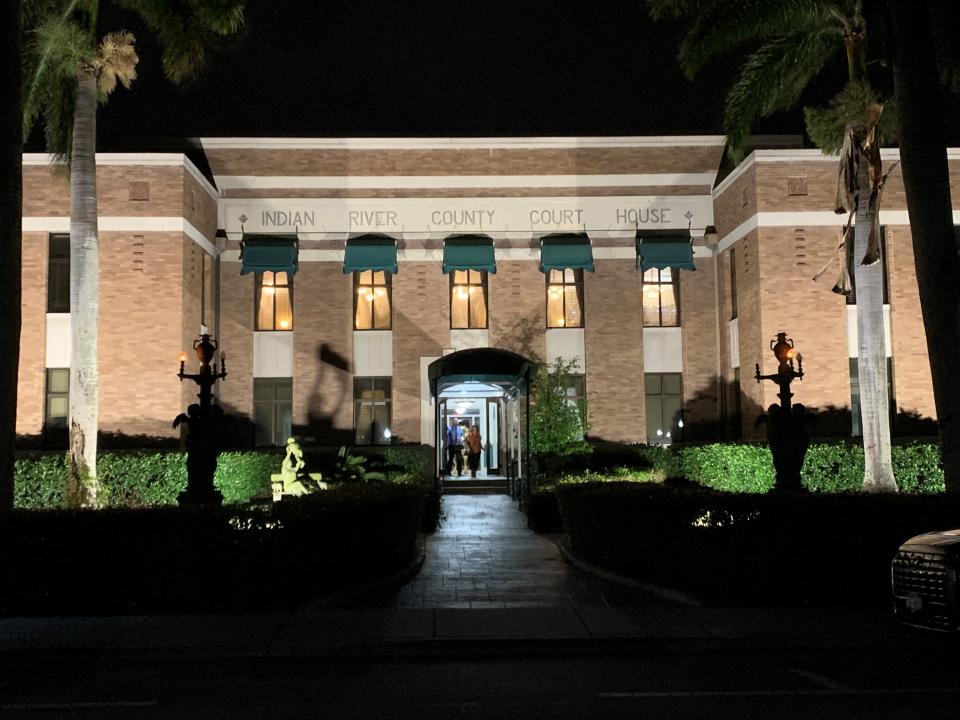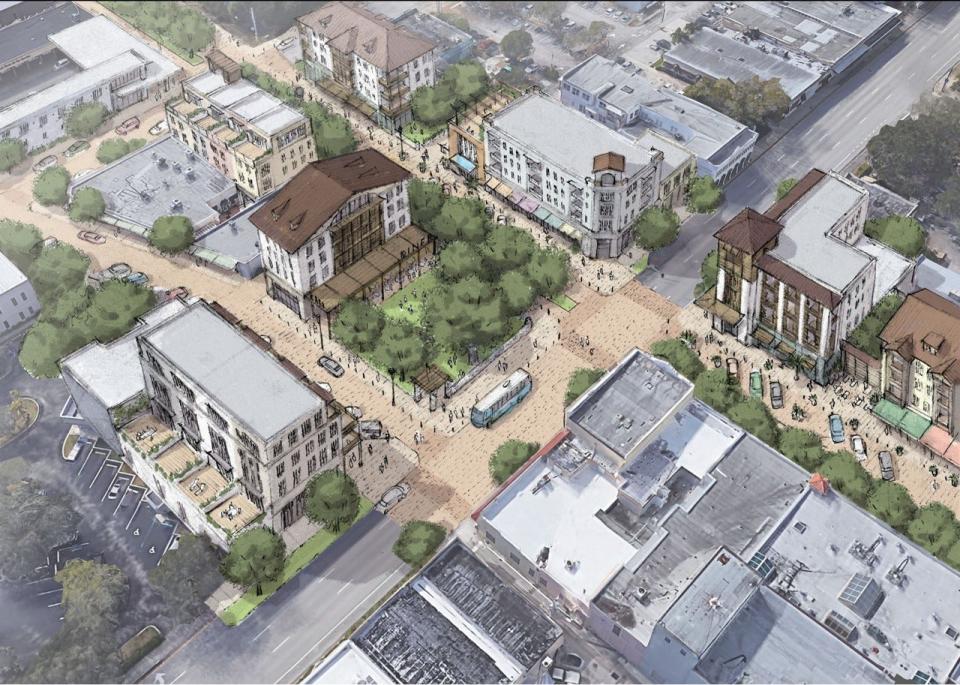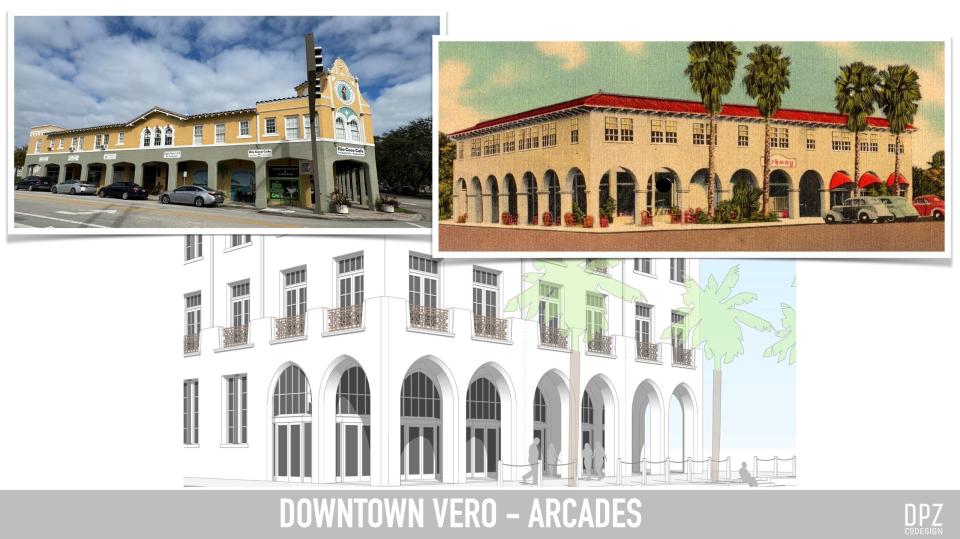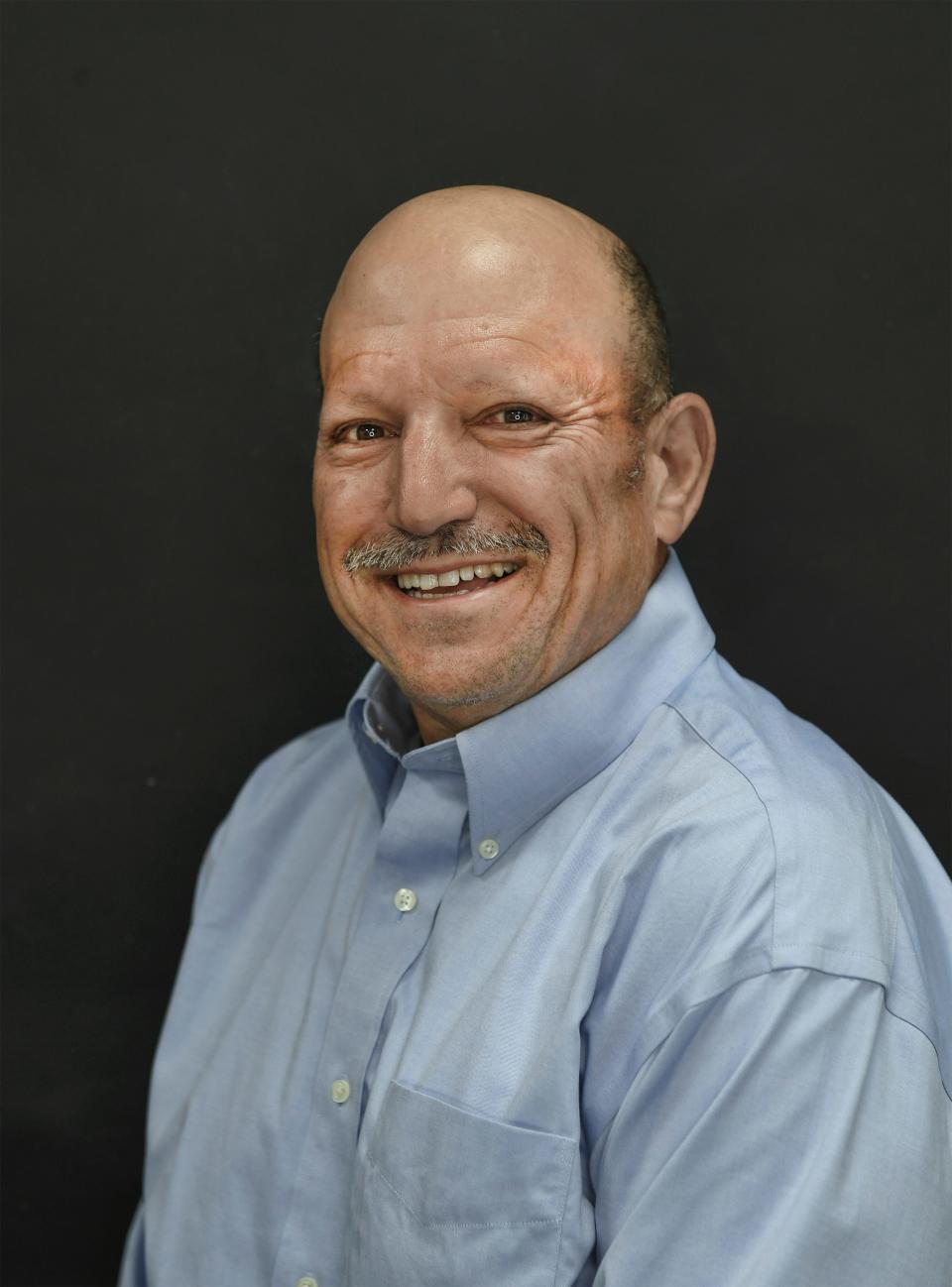Will haste make waste? Vero Beach had better get it right before seeking downtown density
- Oops!Something went wrong.Please try again later.
Given its popularity, it’s clear Vero Beach has aged well over its 105 years.
But, it’s been a slow process. History shows it’s paid to be prudent.
The Vero Beach City Council should remember that as it acts on downtown proposals from urban planner Andres Duany.
Parts of town have been through ups and downs over 105 years. Sometimes, the community tries new things — think the higher-rise Village Spires on Ocean Drive in 1967 — then reacts, passing strict regulation (think height limits) when experiments are not received well.
City leaders have been cautious over the past 50 years, rejecting a proposed 276-room Marriott resort near the Spires in 1985. But they also engaged residents over several years to devise a plan for the three corners the city owns at 17th Street and Indian River Boulevard (the former electric plant and sewage plant). How exactly the city will proceed on the Three Corners could be decided by the end of the month.
More housing needed in downtown Vero Beach?
Can city-county work together?: Amid initial hope, be cautious to ensure Vero Beach, Sebastian region grows gracefully
The downtown plan: Besides housing, how can you primp downtown Vero Beach? Pocahontas, other ideas sensical?
After years of engagement: Don't like Vero Beach Three Corners plan? Too bad. Don't like pitches? Prepare to speak up
Coming soon? Vero Beach Three Corners group's top nod: $564 million proposal to renovate power plant
Few city locations get as much attention as downtown. It was the hub of Indian River County population, culture and commerce before other shopping and living areas started to pop up in the 1960s and 1970s.
Now that the county’s population is almost seven times what it was in 1960, lots has changed.
Downtown, churches and public buildings have expanded over the years, in some cases gobbling up what were old residences. Gone is the Hotel del Mar, a magnificent downtown attraction that lasted more than 35 years before being razed in the early 1960s west of the Florida Theatre.
In the 1990s, Vero Beach businessman Bob Brackett, who worked in the theater as a youngster, started buying, renovating and preserving older buildings ― the theater, former courthouse and others ― in an effort preserve city’s history and clean up downtown.
Since then, downtown has become a successful arts and dining district.
Like members of Vero Beach City Council, I think returning residences and hotel to downtown is a key to making it even better.
Other downtown improvements low-hanging fruit?

Get the official details: Read the downtown Vero Beach master plan and agenda backup presented to City Council May 14, 2024
How exactly would that be done? Duany and his team from DPZ CoDesign came to town earlier this year and studied the matter, proposing an array of ideas to improve downtown and adjacent neighborhoods.
On Tuesday, council members said they liked his report and ideas, which included everything from allowing some teacher housing on Freshman Learning Center grounds to moving City Hall to the old courthouse across the street from Pocahontas Park.
The biggest issue is how to add lodging in the downtown core. Discussion centered around smaller units, as little as 400 square feet (as one Realtor suggested), but more likely 800 to 1,000 square feet. The thought was younger Indian River County residents would be persuaded to stay in town after high school or college to help create a bustling downtown friendly to entrepreneurs and folks who prefer to walk to work, play and shop.
It sounds simple. The reality, Duany and city planning officials say, is developers have been unable to make the math work in an urban core that, per city charter, allows 17 homes per acre. That might sound like an enormous number, considering many of the single-family subdivisions we live in have two to four units per acre.
Downtown, property owners are limited to 50-foot-tall buildings, which no one has proposed changing. On Tuesday, though, the council discussed possibly allowing 60 units per acre — which would require approval by voters in a referendum.
What would density details look like?

The devil, however, is in the details.
Where exactly in the downtown would “density” ― a threatening word to some people — change?
Would the 60 units apply on every parcel?
Could the city continue with 17 units per acre, but allow property owners to give up and transfer their allotments of residential units to other property owners hoping to build homes?
What about parking? It’s normally a barrier to development in urban areas, but given that there are more than 400 public parking spaces downtown, could the city assign rights to them to the first developers who propose to build the kind of housing the city wants?
How would the city ensure development or design standards are met? How would it ensure historic buildings are not targeted for “urban renewal”?
Seeing is believing, or not

Could the city work with the county to explain that more housing downtown might help protect rural land for agriculture and conservation? Could there be a compact in which the city increases density in exchange for a pledge from the county to protect more rural land?
It's timely, because the county is studying potentially expanding what it calls the urban services area, where it provides such amenities as water, sewer and paved roads.
How much housing downtown would be reasonable? Is there a maximum population increase sought?
And, as several folks mentioned Tuesday, what must be done so the public understands the impact of whatever it would be asked to change in a referendum?
“It’s very difficult to visualize density,” said Vice Mayor Linda Moore.
And, as Mayor John Cotugno said, it’s not easy to convert three-dimensional images of possible buildings into one-dimensional language for a charter referendum.
In other words, there are lots of questions.
Enough would have to be answered before Aug. 16, when the council would have to transmit language for a proposed city charter amendment to go on the November ballot.
On top of the Three Corners, all this seems like a lot to ask of the planning staff and the council over the next two-plus months — especially if the city hopes to address other proposed downtown improvements, too.
Several proponents of adding housing downtown said they appreciated the momentum the city has in moving things along.
I do, too. But I’m also realistic.
“The idea of density is a sacred cow in Vero,” Jerusha Stewart, a downtown advocate, told the council. “We’ll have to kill that cow.”
For the referendum to succeed, she’s right.
But that could take more time than the city has to rush this onto the ballot.

It took the Three Corners years to get on the ballot. But thanks to the city having many meetings and discussions, engaging lots of young people and holding evening meetings, the master concept passed with 79% of the vote in a 2022 referendum.
The Vero Beach we know and love has been decades in the making. There could be a lot worse things rather than waiting another year to refine some of the strategies and details needed for downtown.
A failed referendum during a controversial, loaded state and national election in November could set the downtown effort back by years. So, let's get it right.
This column reflects the opinion of Laurence Reisman. Contact him via email at larry.reisman@tcpalm.com, phone at 772-978-2223, Facebook.com/larryreisman or Twitter @LaurenceReisman.
If you are a subscriber, thank you. If not, become a subscriber to get the latest local news on the latest local news on the Treasure Coast.
This article originally appeared on Treasure Coast Newspapers: Vero Beach in high demand: Prudence needed to boost, preserve downtown

